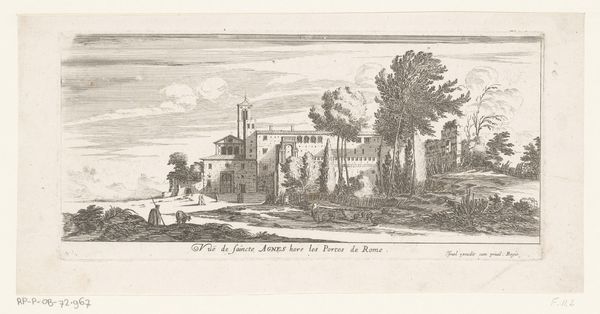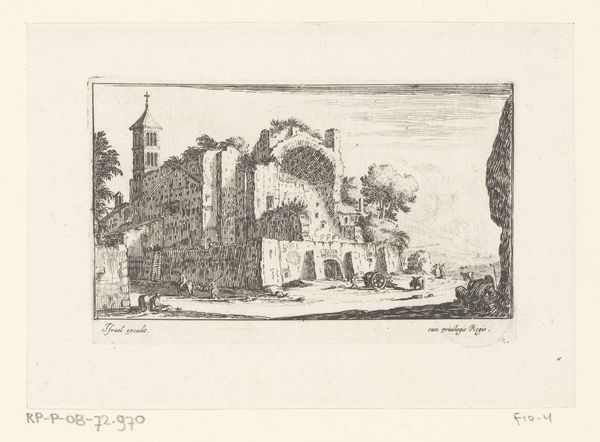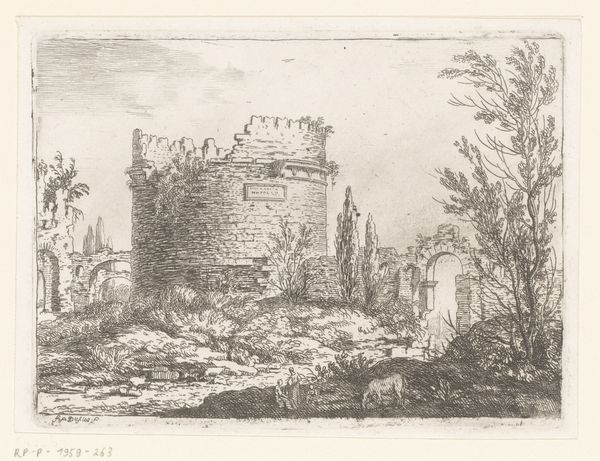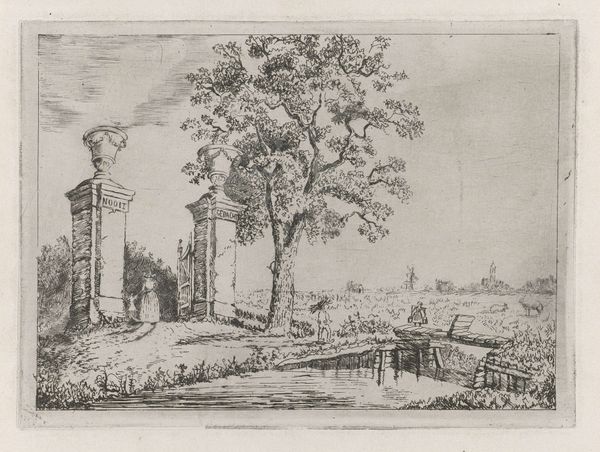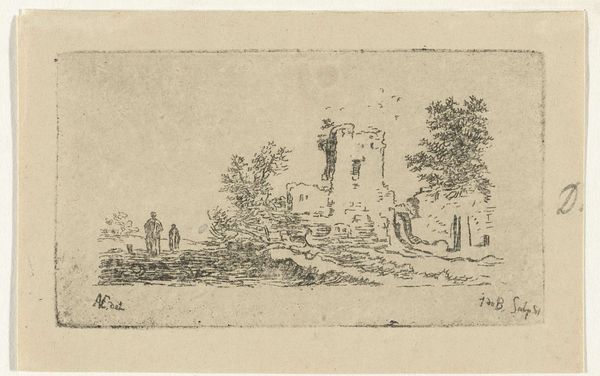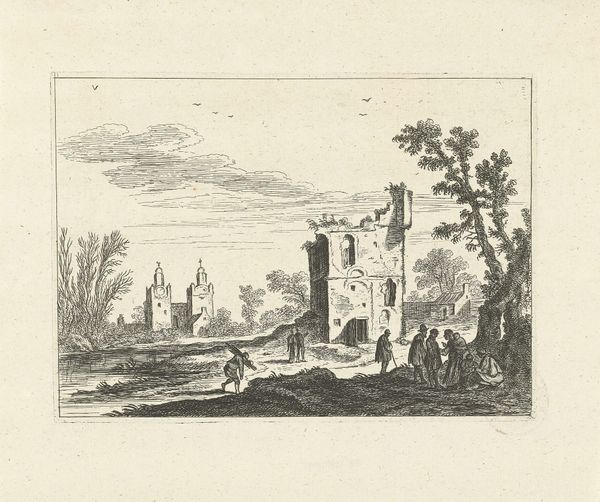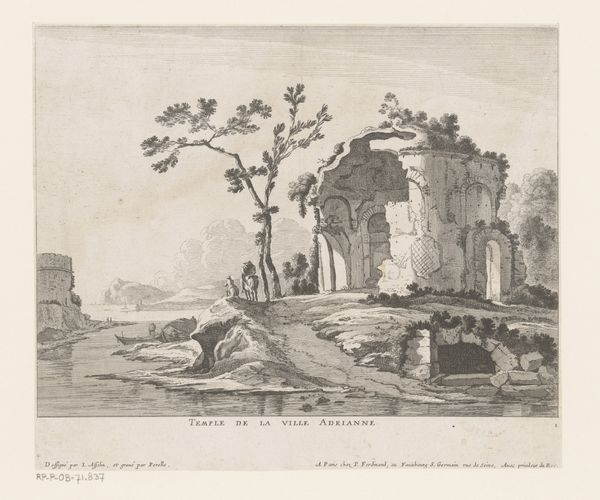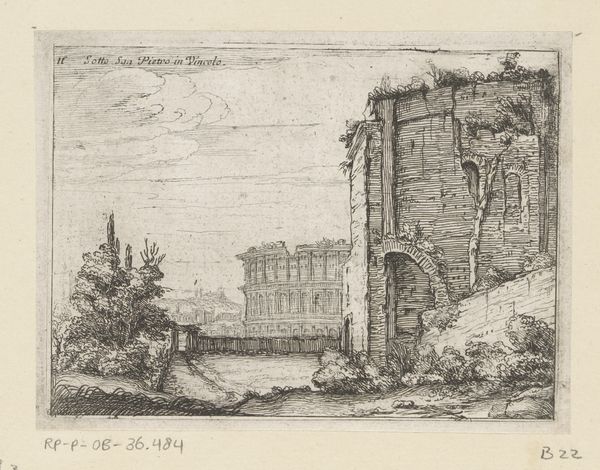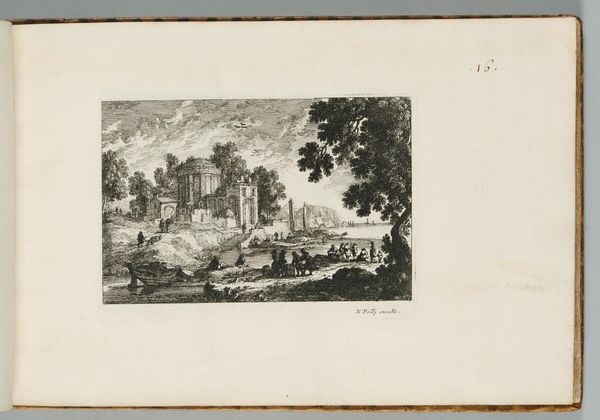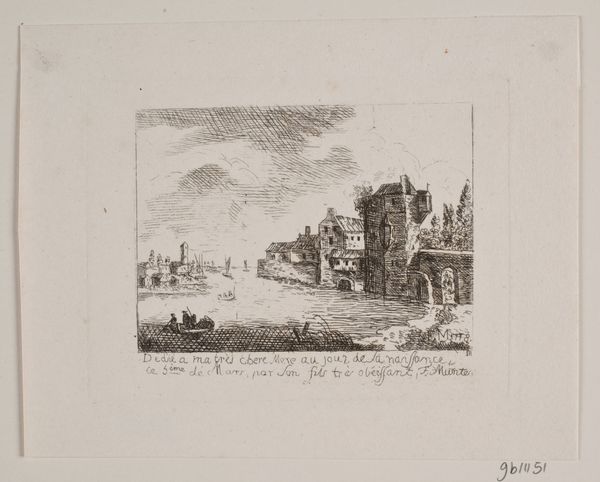
Landschap met zicht op de tombe van Caecilia Metella en de Via Appia in Rome c. 1748
0:00
0:00
Dimensions: height 135 mm, width 184 mm
Copyright: Rijks Museum: Open Domain
Philothée François Duflos made this print of the Tomb of Caecilia Metella and the Via Appia in Rome sometime in the 1700s, using etching. Etching involves covering a metal plate with a waxy, protective layer, through which the artist scratches an image. The plate is then bathed in acid, which bites into the exposed lines. The longer the acid bath, the deeper the lines, and the more ink they will hold. We can see this effect in the varying densities of shadow, built up through cross-hatching. Think of Duflos as a kind of proto-photographer, capturing a picturesque scene for the enjoyment of others. The etching process allowed for the relatively easy reproduction of images, catering to a growing market for visual souvenirs, and enabling wider circulation of this Italian landscape. This artwork encourages us to look closely at not just the image itself, but also at the labor and technologies that bring images into being, blurring the lines between traditional art and commercial production.
Comments
No comments
Be the first to comment and join the conversation on the ultimate creative platform.
